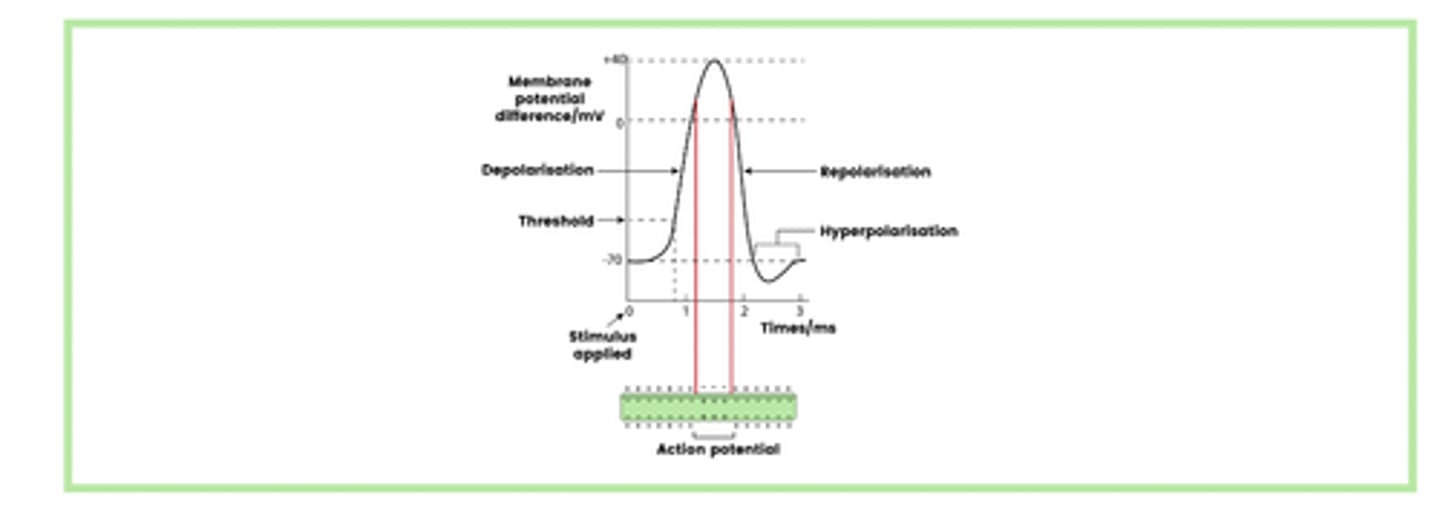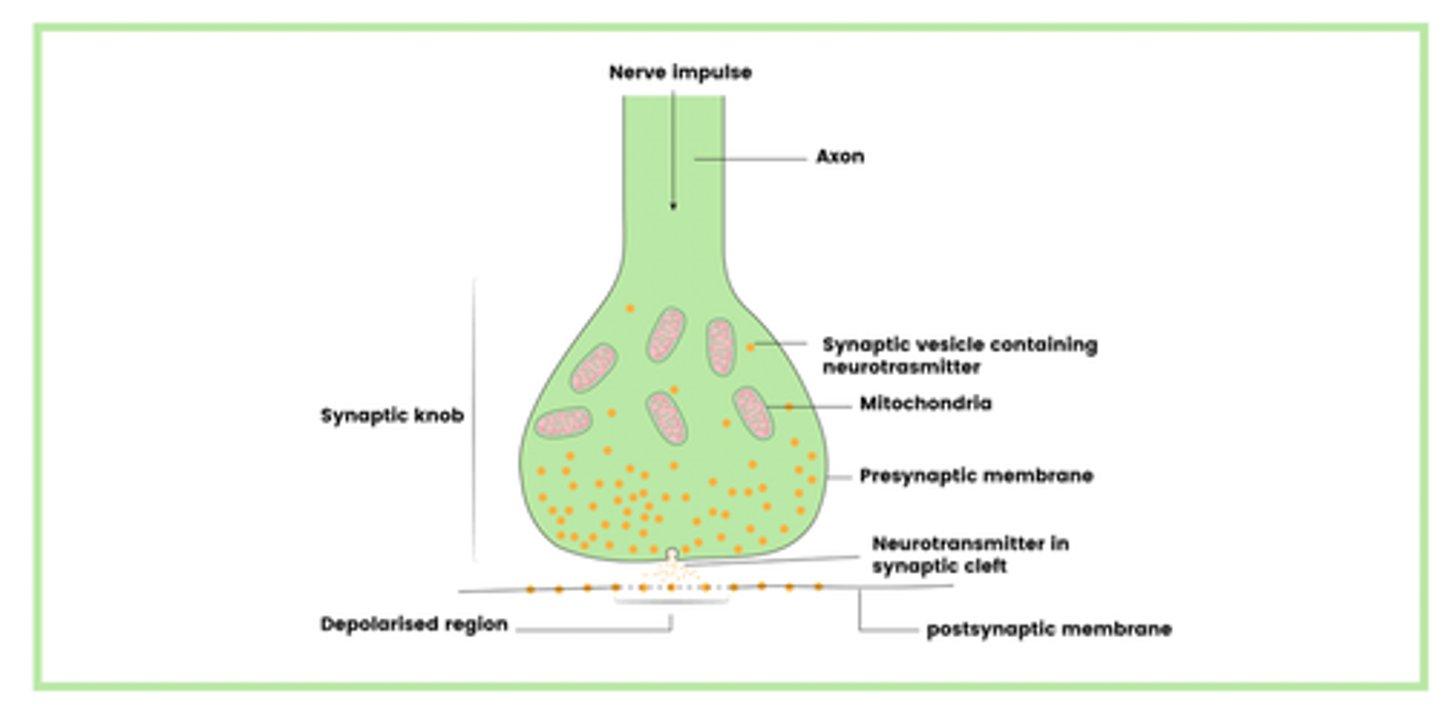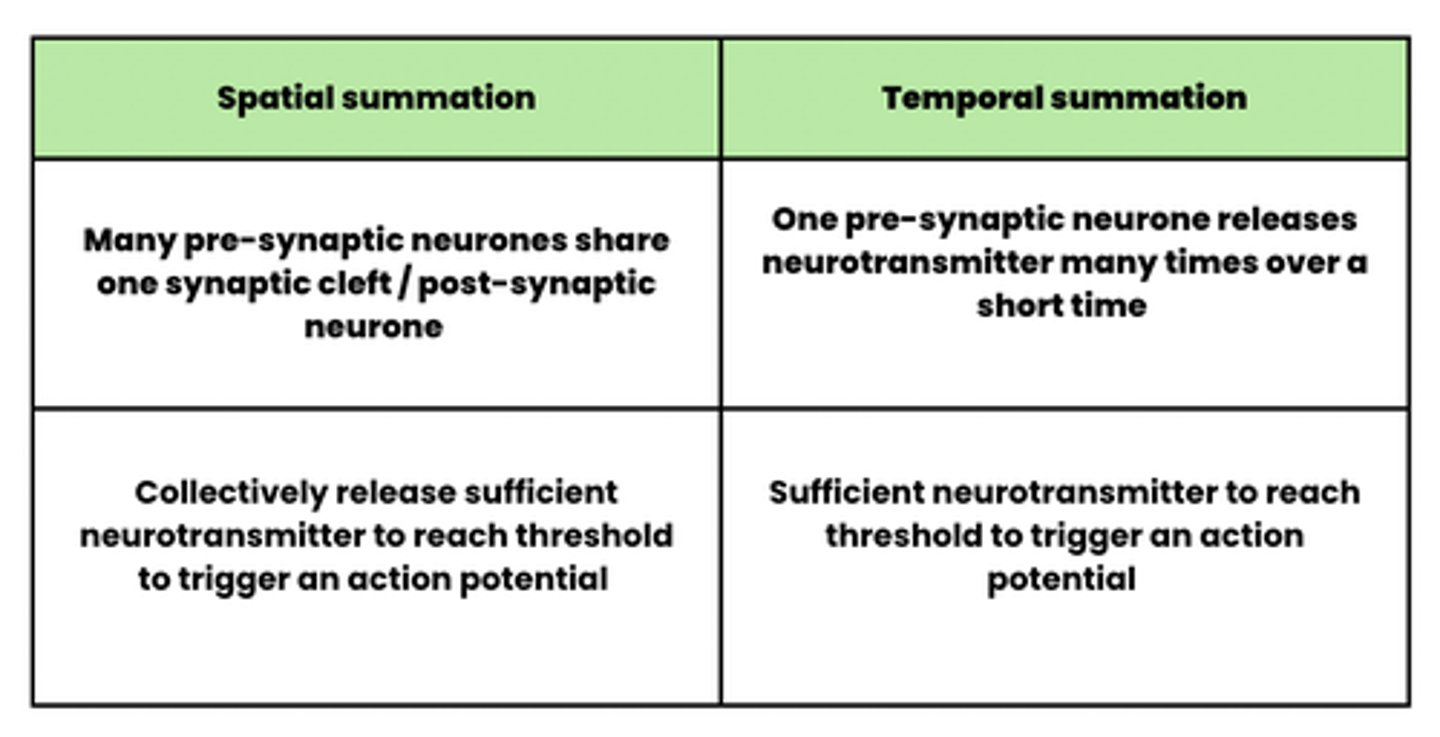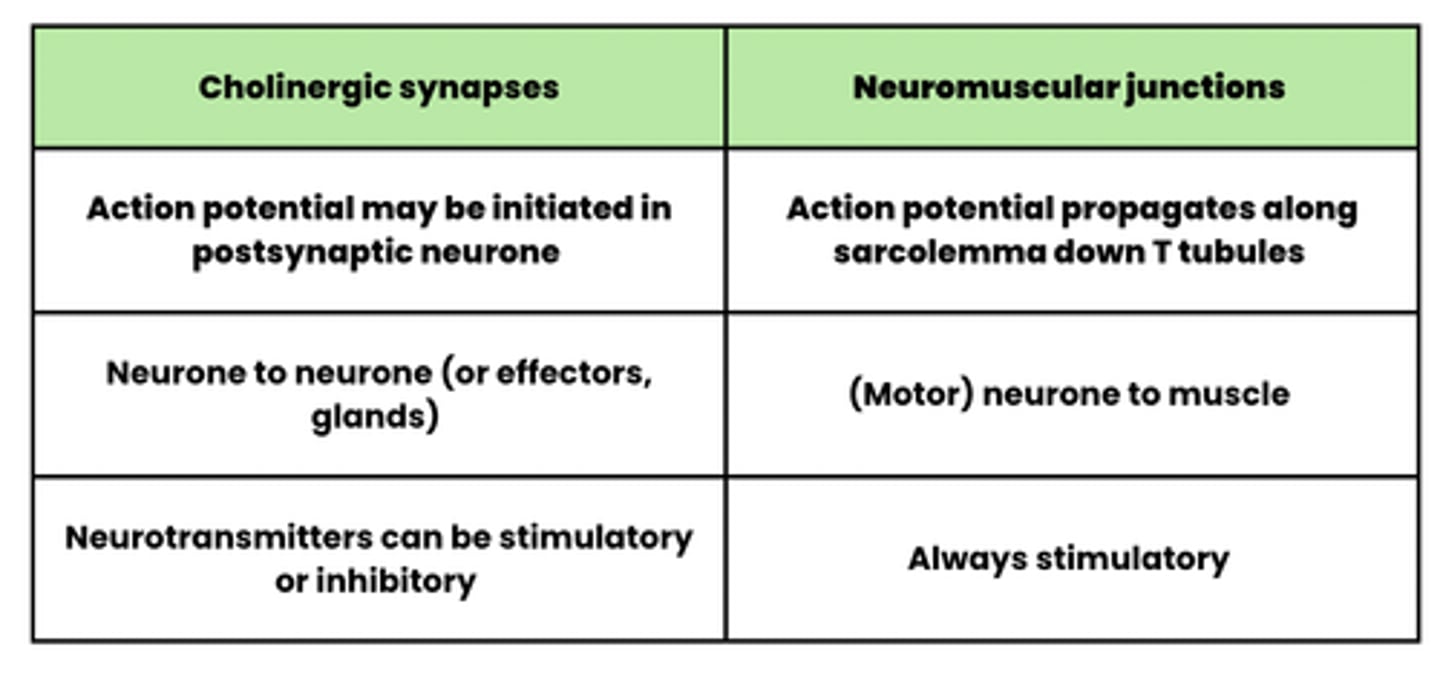StemUp: AQA A level Biology 3.6.2 Nervous coordination
1/22
There's no tags or description
Looks like no tags are added yet.
Name | Mastery | Learn | Test | Matching | Spaced |
|---|
No study sessions yet.
23 Terms
Describe how a resting potential in a membrane is established (5)
1. Sodium-potassium pump actively transports 3 Na+ out of the axon and 2K+ into the axon
2. This creates an electrochemical gradient as there is a higher concentration of K+ inside the axon and a higher concentration of Na+ outside the axon
3. This creates differential membrane permeability as the axon is more permeable to K+ ions
4. K+ ions move out by facilitated diffusion
5. The membrane becomes less permeable to Na+ due to the closed channels
What the steps in the generation of an action potential? (3)
1. Stimulus
2. Depolarisation
3. Repolarisation
4. Hyperpolarisation
5. Resting potential
What happens during the stimulus phase of generating an action potential? (3)
1. Na+ channels open
2. Which increases membrane permeability to Na+
3. This causes Na+ to diffuse into the axon down an electrochemical gradient
4. Leading to depolarisation
What occurs during depolarisation in the generation of an action potential? (3)
1. If the threshold potential is reached
2. An action potential is generated because more voltage-gated Na+ channels open
3. This allows more Na+ to rapidly diffuse into the membrane
What happens during repolarisation in the generation of an action potential? (2)
1. Voltage-gated Na+ channels close and voltage-gated K+ channels open
2. This causes K+ to diffuse out of the axon
What is hyperpolarisation in the context of action potential generation? (2)
1. K+ channels are slow to close
2. This causes a slight overshoot as too many K+ ions diffuse out
How is the resting potential restored after an action potential? (1)
By the sodium-potassium pump
Draw a graph showcasing the generation of an action potential (5)

Describe the all-or-nothing principle (2)
- For an action potential to be produced, depolarisation must exceed the threshold potential
- Action potentials produced are always the same magnitude / size / peak at the same potential
What is the nature of the refractory period of an action potential? (3)
- The time needed to restore the axon to the resting potential
- When no further action potential can be generated
- Because Na+ channels are closed
What is the importance of the refractory period of an action potential? (3)
- Ensures discrete impulses are produced (action potentials don't overlap)
- Limits frequency of impulse transmission at a certain intensity (prevents over reaction to a stimulus)
- Ensures action potentials travel in one direction
What are the factors that affect the speed of conduction of an action potential? (3)
- Myelination
- Axon diameter
- Temperature
- Saltatory conduction
Describe how myelination affects the speed of conduction of an action potential (2)
- Depolarisation will only occur at the Nodes of Ranvier
- Impulse doesn't travel / depolarise the whole length of the axon
Describe how axon diameter affects the speed of conduction of an action potential (3)
- Larger diameter means less resistance
- To the flow of ions in cytoplasm
- So quicker conduction of action potential
Describe how temperature affects the speed of conduction of an action potential (3)
- Increases the rate of diffusion of ions as there is more kinetic energy
- This increases the speed of conduction of an action potential
- Proteins/enzymes could denature at certain temperatures
Draw a labelled structure of a synapse (9)

How is an action potential transmitted across a cholinergic synapse at pre-synaptic neurone? (5)
1. Depolarisation of pre-synaptic membrane
2. Causes the opening of voltage-gated calcium channels
3. So calcium ions diffuse into the pre-synaptic neurone
4. This causes vesicles containing ACh (Acetylcholine) to move and fuse with the presynaptic membrane
5. To release ACh into the synaptic cleft via exocytosis
How is an action potential transmitted across a cholinergic synapse at post-synaptic neurone? (5)
1. ACh diffuses across synaptic cleft
2. To bind to specific receptors on the postsynaptic membrane
3. This causes sodium channels to open
4. Which allows sodium ions to diffuse into post synaptic knob causing depolarisation
5. if a threshold is met, an action potential is initiated
Describe the unidirectionality of synapses (2)
- Neurotransmitter is only made in and released from the pre-synaptic neurone
2. Receptors are only present on the post-synaptic membrane
What is the summation feature of synapses? (3)
- Addition of a number of impulses converging on a single post-synaptic neurone
- Causes rapid buildup of neurotransmitter
- So threshold more likely to be reached to generate an action potential
Contrast spatial vs temporal summation (4)

How do inhibitory neurotransmitters inhibit synapses? (3)
1. Inhibitory neurotransmitters hyperpolarise the postsynaptic membrane
2. So chloride channels will open and allow chloride ions to diffuse in
3. Potassium channels will also open so potassium ions will diffuse out
4. Therefore, more sodium ions are needed for depolarisation
5. So reduces chance of threshold being met and action potential formation at post-synaptic membranes
Compare the transmission of an action across cholinergic synapses vs neuromuscular junctions (6)
